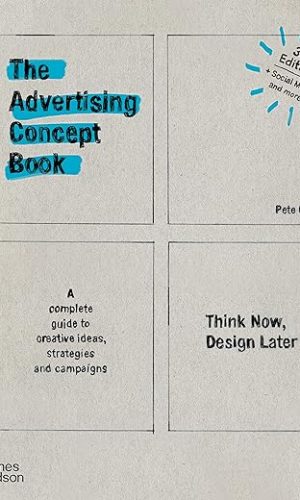The Fall of Advertising and the Rise of PR.
£23.20
Reveals a shift in marketing trends from advertising to publicity, citing the successes of such top brands as the Body Shop, Starbucks, and Wal-Mart while sharing strategies on establishing credibility and implementing a slow PR build.
Read more
Additional information
| Publisher | First Edition (20 Aug. 2002), HarperBusiness |
|---|---|
| Language | English |
| Hardcover | 300 pages |
| ISBN-10 | 0060081988 |
| ISBN-13 | 978-0060081980 |
| Dimensions | 13.97 x 2.67 x 20.96 cm |










by Martin Turner
Have you read
The 22 Immutable Laws Of Branding
? Or
The 22 Immutable Laws Of Marketing
? Both by the same author. If you’ve read those, then you don’t need to read this book, which is essentially the same argument, but without all the wise advice. Actually, even if you haven’t read them, you don’t need to read this book: buy either one of them instead.
The problem with this one is that Ries and Ries have a really good point to make, but they make it in the introduction and then just keep repeating it right the way through the book. They also make this point as one of the 22 immutable laws in both of the other books. Ries and Ries are great when they are handing out pithy, useful advice with just a couple of resonant examples. Ries and Ries on a soap box just get tedious.
The other problem with this book is that the authors have not really taken the trouble to understand PR — only to understand what it can do for your marketing campaign. But PR isn’t just a branch of marketing (though, in most commercial organisations, the PR _function_ is part of the marketing department), and the authors don’t do justice to their title.
Before I read it, I actually thought this was going to be about the rise of PR as epitomised by New Labour in the late 90s, and the fall of advertising as epitomised by the end of the Saatchi dominance of political advertising. I was also expecting Greenpeace’s use of Video News Releases (and their subsequent fall), and the growth of internet PR to be covered. But they aren’t. This book should really be called: The Rise of PR in branding and the fall of advertising. It doesn’t cover lobbying, public affairs, media crises, or any of the things the title would lead you to believe.
The other, other problem with this book is that all the criticisms it makes — which are largely of big budget TV ads — were already made, more succinctly, by David Ogilvy in
Ogilvy on Advertising
, way back in 1983.
The other, other, other problem is that the case is nowhere near as clear cut as the authors would have you believe. True, PR has advanced strongly into advertising’s territory — but it’s also advanced into marketing’s territory as well, as a strategic discipline rather than just ‘free advertising’. But look at the way Ronseal built its brand with “It does exactly what it says on the tin”, all done with one simple TV ad: advertising still has some serious mileage, after all. And can you imagine Ronseal’s PR achieving the same effect without the ad? I don’t think so.
Of course, Ries has now written the forward to
The Fall of PR & the Rise of Advertising
. I haven’t read it yet, and maybe I won’t: there comes a point in life when you have to take a nuanced view and say that, in their own domains, both advertising and PR can make a valuable contribution.
by Natasha
The Ries’ book on PR is an absolute must for ALL the companies out there. The book shows us the reality behind the Advertising empire: an empire that seems to have lost its function, effectiveness and credibility.
“Creativity wins awards, but does it also win sales?” is the question, and the answer follows: ” To be effective, advertising doesn’t need creativity. It needs credibility”, and that is where PR comes into the picture.
The strenght of this book is in the back-up evidence that the Ries bring forward, the simplicity and sincerity.
Companies have to follow their advice: “You can’t live in the past. Advertising is no longer fresh and exciting. There’s just too much of it.”, and start focusing on the future: on PR.
Excellent book!
by meregalli walter
An extremely boring book. What a pity, the authors said it all in the title and wasted two hundred and something pages just to repeat it. Ok repetita juvant but I ask a little more than this.
Not a single wise hint to pr practitioners. Lots of so called case studies, all squeezed in to testimony the truth of the brilliant book title.
Not a single hint on strategy – apart from “a good pr plan takes time, lot of time”. Not to mentiio tactics.
You can live, work and do just as fine without this book.
by Maria Paz Ramirez
It is in good condition, the book was published long time ago but it is very useful if you are studying PR. LOVE IT